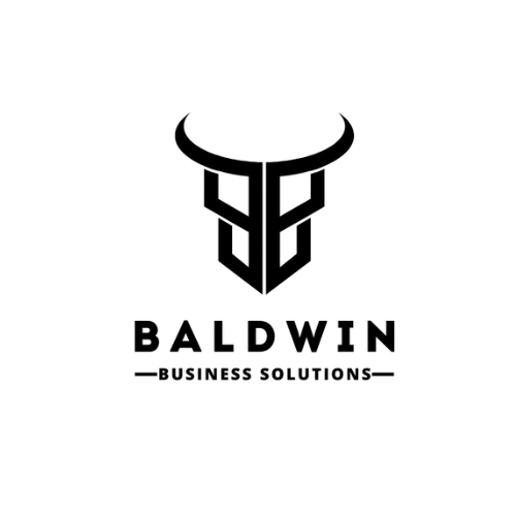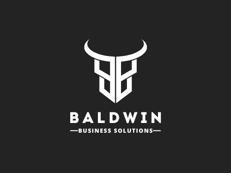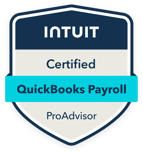Choosing the Right Business Organization: A Comprehensive Comparison of Sole Proprietorship, LLC, and S-Corp
Joe Baldwin
2/17/20255 min read


Understanding Business Organizations
When considering how to establish a business, it is essential to understand the various types of business organizations available. Among the most common forms are Sole Proprietorships, Limited Liability Companies (LLCs), and S Corporations. Each of these structures has unique characteristics that influence their operation, legal implications, and suitability for different business needs.
A Sole Proprietorship is the simplest form of business organization. It is owned and operated by a single individual, who retains full control over operations and profits. However, this structure also implies that the owner is personally liable for any debts or obligations incurred by the business. This lack of liability protection means that personal assets could be at risk in the event of lawsuits or financial difficulties. Additionally, Sole Proprietorships are relatively easy to establish, with minimal administrative requirements and direct tax implications, as business income is reported on the owner's personal tax return.
On the other hand, a Limited Liability Company (LLC) combines the operational flexibility of a Sole Proprietorship with the liability protection characteristic of corporations. In an LLC, owners, known as members, enjoy limited personal liability for the debts and obligations of the business. This means that personal assets are safeguarded against the company's financial liabilities, providing added security for members. Furthermore, LLCs have fewer formalities and administrative requirements compared to S Corporations, making them appealing to many small business owners.
Finally, S Corporations offer a more structured approach with specific operational guidelines. They allow for limited liability protection similar to an LLC but come with stricter requirements regarding ownership, governance, and taxation. S Corporations provide pass-through taxation, meaning the income is not taxed at the corporate level but passed through to shareholders, who report it on their personal tax returns. This feature can lead to potential tax savings, although S Corporations must adhere to more extensive administrative and regulatory requirements than the other types mentioned.
Tax Advantages and Disadvantages
When evaluating the tax implications of various business organization methods, it is essential to consider how each structure operates under the tax laws. Sole proprietorships are the simplest form of business entity, where the owner reports business income and expenses on their personal tax return. This structure leads to the advantage of nominal administrative costs and simplified taxation. However, the primary disadvantage is that owners are subject to self-employment taxes on all profits, which can amount to a significant financial burden, especially when earnings are high.
In contrast, Limited Liability Companies (LLCs) offer flexibility in taxation. By default, an LLC is a pass-through entity, meaning profits and losses are reported on the owners' personal tax returns, similar to a sole proprietorship. This structure allows owners to avoid double taxation often seen in corporations. However, LLC owners may also face self-employment taxes on their earnings, impacting their net income significantly. Furthermore, state-specific regulations and potential franchise taxes can introduce complexities that must be managed effectively.
On the other hand, S-Corporations provide a noteworthy tax advantage by uniquely allowing owners to classify themselves as employees, thus potentially lowering self-employment taxes. S-Corps distribute profits as dividends, which are not subject to self-employment tax, allowing for considerable savings in certain scenarios. However, the designation comes with stricter eligibility requirements, including limits on the number of shareholders and compliance with various IRS regulations, which can introduce additional administrative costs.
These examples illustrate how the choice of business structure can have significant tax implications. Each entity type presents its own set of advantages and disadvantages that entrepreneurs must weigh carefully in light of their specific financial circumstances and future goals. Understanding these elements is crucial for making informed decisions regarding the appropriate business organization model.
Choosing the Best Structure for Small Businesses and Contractors
Determining the most suitable business organization method for small businesses and contractors involves careful consideration of various factors including size, revenue expectations, and risk tolerance. Each structure—sole proprietorship, LLC, and S-Corp—offers distinct advantages and disadvantages that can significantly impact an entrepreneur's operations.
Sole proprietorships are typically the most straightforward option, providing ease of setup and operation. They allow for complete control over the business and straightforward tax implications, as business income is reported on the owner's personal tax return. However, the primary drawback is the unlimited personal liability that owners face. This means that personal assets are at risk in the event of lawsuits or debts, a significant concern for contractors who may face high liability due to the nature of their work.
Limited Liability Companies (LLCs) present a compelling option for small businesses aiming to protect personal assets while enjoying operational flexibility. They blend elements of both sole proprietorships and corporations, offering limited liability protection along with pass-through taxation benefits. However, the complexity involved in setting up an LLC, along with varying state regulations, can be daunting for some entrepreneurs. Additionally, LLCs may incur higher formation fees and ongoing maintenance costs, which can be challenging for startups with limited resources.
On the other hand, S-Corporations provide the advantage of limited liability and potential tax benefits, particularly for businesses that expect to reinvest earnings rather than distribute them. Known for allowing business owners to potentially avoid self-employment tax on a portion of their income, S-Corps can be advantageous for those with significant revenue expectations. However, they do come with stricter operational processes and regulatory requirements, making them a less ideal choice for smaller operations or contractors just starting out.
Ultimately, the decision on which business structure to choose hinges on an entrepreneur's specific needs, risk tolerance, and long-term goals. By analyzing the pros and cons of each option and weighing them against personal circumstances, small business owners and contractors can make an informed decision that will support their business aspirations.
Case Studies and Recommendations
To better understand the implications of choosing a business organization, we analyze several case studies of small businesses and contractors who selected different organizational structures. Each case study highlights the reasons behind their choices, the experiences they encountered, and the outcomes that ensued.
One prominent example is a freelance graphic designer who operated as a sole proprietor. Initially, this organization method seemed ideal due to its simplicity and low cost. However, the designer faced challenges when a client sued for a design breach. The resulting personal liability raised alarm bells, leading the designer to transition to a Limited Liability Company (LLC) structure. Through this shift, the designer found peace of mind, knowing personal assets were shielded from business-related legal claims while also benefiting from more favorable tax treatment.
In contrast, a small coffee shop chose to establish itself as an S-Corporation. The owner selected this model to attract investors by offering stock options, anticipating rapid growth. The S-Corp setup provided tax benefits, as profits distributed to shareholders were taxed only once. However, the owner soon realized the complexity of compliance requirements and initially regretted the decision. Over time, through diligent accounting practices and professional assistance, the coffee shop thrived with a well-structured approach, leading to profitability and expansion.
Based on these insights, we recommend that business owners thoroughly assess their specific needs and potential risks before deciding on an organizational structure. Consulting with a legal or financial professional can provide tailored advice, ensuring that founders understand both the benefits and drawbacks of each option. Key considerations should include liability exposure, tax implications, and growth potential. Awareness of potential pitfalls, such as the complexity of compliance and personal exposure to debts, will equip founders with a clearer perspective in choosing the right business organization for their ventures.












